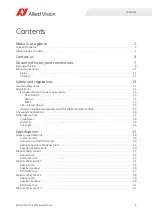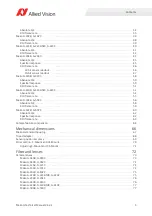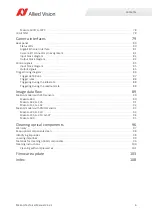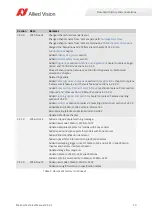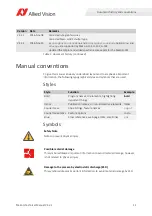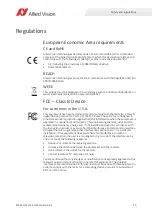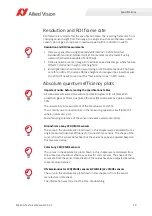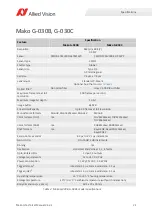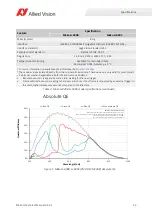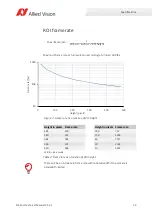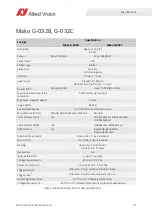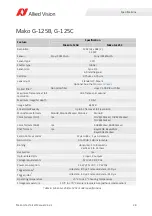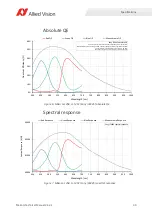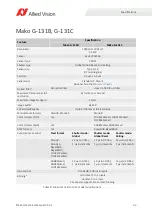
Specifications
18
Mako G Technical Manual V4.2.2
Notes on specifications
Frame memory
Normally, an image is captured and transported in consecutive steps. The image is
taken, read out from the sensor, digitized and sent over the GigE network. Mako G
cameras are equipped with an image buffer. Specifications tables for each camera
show how many frames can be stored by each model.
The memory operates according to the FIFO principle. This makes addressing for
individual images unnecessary.
Dimensions and mass
The dimensions listed in the following tables are for Mako G standard housing
models. Dimensions include connectors but not the tripod and lens.
The mass listed in the following table are for Mako G standard housing models.
Mass does not include the tripod and lens.
Unless otherwise stated, frame rate, exposure time control, trigger latency, and
trigger jitter values are for 8 and 12-bit pixel formats only; i.e., Mono8, Bayer8,
Mono12Packed, Bayer12Packed, and YUV411Packed.
Monochrome and NIR models
As monochrome and NIR models do not have an optical filter always attach a dust
cap when a lens is not attached to minimize the possibility of contaminants falling
on the sensor surface.
The number of frames (
StreamHoldCapacity
) depends on resolution, pixel format,
and packet size. Stated number of frames is typical for full resolution, Mono8/
Bayer8, and
GevSCPSPacketSize
= 8192.

